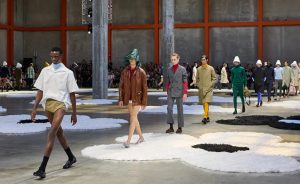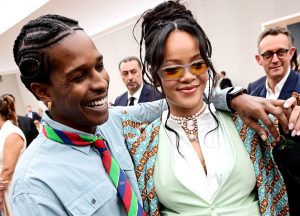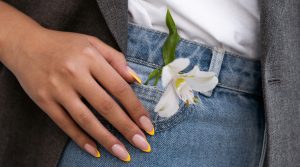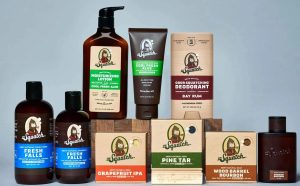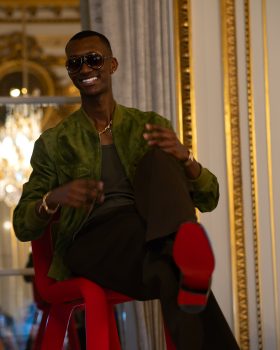Fashion is an intricate, multifaceted domain that forms a thought-provoking area of analysis. There exists rich potential in critically evaluating the evolution of fashion design and trends from diverse academic lenses. Students aiming to write compelling essays on fashion must go beyond surface-level observations to provide original arguments backed by research. Writing compelling essays about fashion necessitates a keen understanding of trends, styles, and cultural influences, and for students seeking to enhance their writing, professional essay help by UKwritings offers expert guidance and insights to ensure their essays showcase a nuanced understanding of the dynamic world of fashion. This guide outlines practical strategies for identifying unique essay topics, locating quality sources, structuring coherent arguments, and developing sophisticated writing skills when covering fashion. Adopting these tips allows students to produce academic essays that engage readers through blending substance, style and strategic analysis.

Tips For Students Writing Essays About Fashion
Selecting Strong Fashion Essay Topics
Brainstorming essay topics represents an essential first step. Rather than wide topics like “1950s Fashion”, identify a specific, debatable angle to shape the essay’s trajectory. For instance, “The Paradox Between 1950s Fashion Elegance and Social Oppression of Women” introduces intrigue and complexity. Consider niche fashion topics through historical, sociological, political, celebrity culture, photographic or economic lenses. Analyze causation and implications of a fashion concept’s evolution or reception. Focused, well-defined topics give essays direction and prevent drifting into generalizations.
During initial brainstorms, list any intriguing fashion areas without judgement before selecting a definitive topic. Keep an open mind to underrepresented topics involving demographics, cultures or time periods with analytical potential. Browse academic fashion journals for inspiration from issues scholars actively discuss. Free-writing in a stream of consciousness style can unveil unlikely connections between fashion and other domains like architecture, fine art or geography. These intersections introduce fascinating analytical dimensions.
Narrow down broad topics by asking probing questions to target an essay’s specific scope. For example, an overview of 1920s fashion could focus on symbolic interpretations of Coco Chanel’s Little Black Dress within women’s emancipation movements. Outlining potential supporting points maps whether adequate credible evidence exists before committing to a particular topic. Choose topics demonstrating gaps requiring further investigation to avoid dead-ends due to sparse resources.
Conducting Rigorous Fashion Research
Conducting research introduces the framework supporting an essay’s examination of a fashion topic. Search for both primary and secondary sources to balance first-hand insights with expert analyses. Primary sources like interviews with designers, curators or consumers provide eyewitness perspectives from individuals directly involved in fashion. Secondary sources such as scholarly books/articles offer historian or critic interpretations through frameworks like feminism or semiotics.
Library database searches using keywords reveal fashion academic journals containing peer-reviewed articles often not available through basic web searches. Literature reviews consulting reference lists in existing materials also unveil additional relevant sources. Historically-oriented fashion essays benefit from browsing digitized archives of runway show footage, ad campaigns, documentaries or magazine editorials. For modern fashion topics, hashtag searches on social media unearth diverse public opinions.
Gather general background information before honing focus upon pertinent details. Compile all bibliographic details and page numbers of useful evidence during research sessions for smooth citations integration later. If analyzing controversial fashion topics involving sensitive issues of gender, race or sexuality, ensure examining diverse viewpoints to avoid narrow interpretations. Record research reflections and analytical ideas in a dedicated notebook to stimulate further critical thinking.
Logically Structuring the Essay
After completing sufficient in-depth research, logically structure the fashion essay using standard academic composition. First, the introduction paragraph should open with an intriguing hook luring readers before clearly stating the essay’s central thesis or argument. A concise preview of supporting points outlines the essay’s direction without revealing all details.
The next body paragraphs present carefully selected evidence to substantiate the main thesis. Each paragraph consists of a topic sentence introducing an aspect the essay will prove, supported by cited examples, facts, quotes and explanatory analysis. Paragraph transitions smoothly build upon previous points to collectively form a cohesive, convincing case. Navigating fashion essays requires students to stay attuned to trends and cultural nuances, and for those aspiring to enrich their discussions, engaging discussion board post writing services can provide valuable support, fostering thoughtful dialogues and insightful perspectives within fashion academia.
Finally, the conclusion summarizes key ideas explored in the body paragraphs and argues their wider significance beyond the essay’s strictly defined scope. End by posing unanswered questions from the fashion analysis to inspire readers to discover further insights. Overall, each section flows naturally while spotlighting the most compelling evidence available to validate the essay’s fashion argument.
Employing Impactful Writing Techniques
Beyond planning good structure, executing sophisticated writing strengthens fashion essays considerably through elements like precise word choices, smooth integration of source materials and variation within sentence styles.
Firstly, select descriptive yet concise terminology resonating with fashion contexts discussed. For example, “flapper silhouette” instantly communicates associations with the 1920s party-centric youth culture and liberated tubular dresses contrasting with previous Victorian-era frilly excess. Avoid overusing vague intensifiers like “very” or “really” which dilute statements lacking specificity.
Next, blend paraphrased and directly quoted evidence from sources to reinforce claims made around the essay’s fashion analysis rather than inserting disjointed examples merely for padding word counts. Introduce each selected reference, embed quoted text fluidly through signal phrases like “Critic Simon Reynolds (2021) argues….” and explain its relevance immediately afterwards to circle back to the paragraph’s central point.
Finally, consciously alternate longer, more complex sentences with shorter punchy ones throughout the essay for engaging rhythm and cadence while reading. For example, a profound viewpoint could be emphasised through a concise single sentence paragraph. Repeating similar grammatical structures becomes monotonous so proactively vary expressions. Now equipped with strong topics, research, structure and style strategies, fashion essay writing proves an enriching opportunity to showcase critical thinking.
Recommended Fashion Essay Ideas
Four intersecting realms surrounding fashion theory and history contain abundant inspiration for compelling essay topics. Keep these areas in mind when first selecting a topic and conducting deeper research into overlooked issues warranting discussion.
Semiotics of Fashion
Semiotics refers to the meanings behind signs and symbols embedded within visual culture like clothing, posture and makeup choices reflecting certain stereotypical assumptions or connotations. Essays could decode recurring motifs across fashion advertising over time representing aspirational qualities, gender norms or values prioritized in a given era. Alternatively, case studies interpreting nuances of a particular celebrity’s or subculture’s construction of fashion signifiers introduce semiotic theory for understanding unspoken messaging through style.
Fashion and Performativity
Performativity involves examining how fashion facilitates modes of public-facing identity display, interaction rituals and presentations of the self. Essays considering topics through a performativity lens evaluate how groups or individuals strategically appropriate certain stylistic elements to emit desired impressions affecting social outcomes in contexts like workplace promotions or peer acceptance. Underrepresented issues like masks functioning as transformative fashion statements or the role of digital filters in catfishing deceptions represent fascinating performativity-driven discussions.
Fashion and Intersectionality
The interdisciplinary concept of intersectionality recognizes how gender, racial, sexual, class and ability identity markers intersect to produce overlapping systems shaping every human’s experiences. Fashion essay topics deploying intersectionality move beyond single-axis analyses examining issues solely through isolated categories to capture multidimensional realities. For example, assess how social media created complex youth peer status hierarchies based on calculative impressions management across intersecting dimensions like facial attractiveness, follower ratios, stylistic novelty and number of shares/likes.
Sustainability Issues in Fashion
Environmental sustainability proves an increasing concern across the fashion industry from textile material sourcing to chemical usage in production processes and resulting waste when swiftly discarded. However, tensions persist between profits prioritization and genuinely transforming towards ecological sensitivity. Essay topics can critically address aspects like greenwashing marketing strategies exaggerating sustainability measures for bolstering brand goodwill, while avoiding implementing meaningful changes that compromise commercial success. Case studies on particular companies’ contradictory stances reveal underlying motives and activist call-outs.
Conclusion
Selecting intriguing fashion essay topics constitutes a crucial first step when presenting strong academic arguments within this multifaceted domain. Seek specificity over broad overviews when identifying promising issues for analysis. Conduct both primary and secondary research to gather well-rounded evidence illuminating the topic from diverse informative perspectives.
Carefully structure essays using an introduction, body paragraph sections substantiating the central thesis, and conclusion reiterating broader significance of claims. Finally, frame arguments through polished writing boasting elements like topic-relevant terminology, seamless integration of quoted material, and consciously-varied sentence styles to engage readers. Mastering these steps leads to compelling fashion-focused essays blending substance, research and elegant style.
Read More:

fashionabc is a fashion technology platform, comprising a digital directory and various other digital tools and supply chain solutions for the fashion industry ecosystem, that focus on ethical fashion and sustainability. We are building inclusive digital transformation tools for fashion professionals who are willing to take steps towards a more sustainable ethical fashion industry, by adopting AI and DLT blockchain technology.
* building digital profile and IP solutions for fashion businesses
* tackle issues such as provenance and counterfeit in supply chain
* contribute to the construction of a meritocratic ethical fashion industry which is certified and part of the circular economy





